Hildreth Meière Documentary Series - Watch Trailer
Hildreth Meière Documentary Series - Watch Trailer
Commissioned by: Mayers, Murray & PhillipMedium: Byzantine-style glass mosaicFabricated by: Pühl & WagnerInstalled by: Ravenna Mosaics
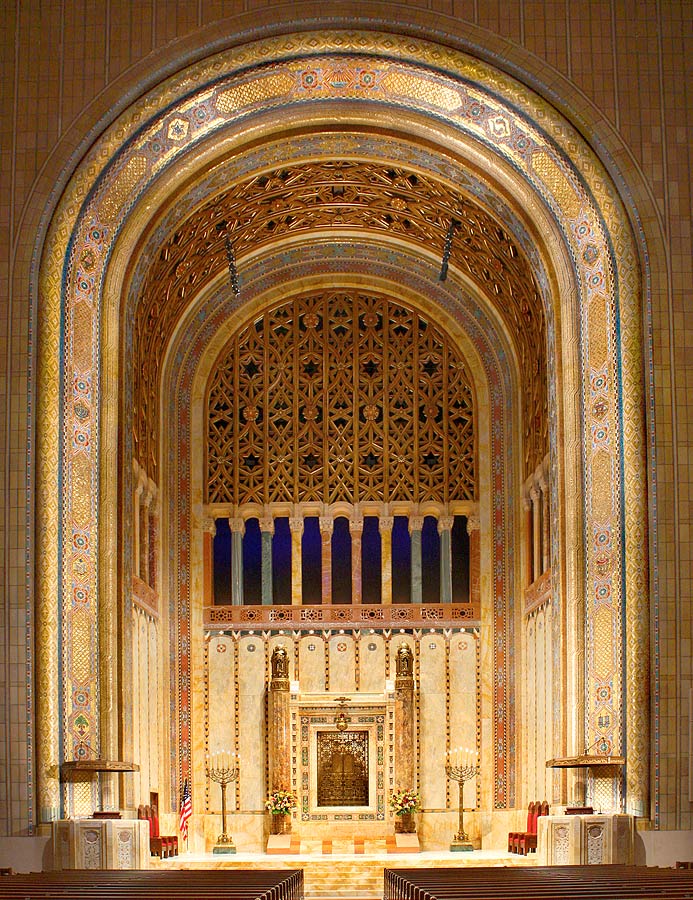
Eight-story-high arch in main sanctuary with Ark on eastern wall
Temple Emanu-El is the largest synagogue in the world, seating 2,500 people. Designed by Kohn, Butler, and Stein, the Moorish-Romanesque facade symbolizes a mingling of Eastern and Western cultures. Associate architects Mayers, Murray & Phillip were responsible for the interior decoration. They called upon Hildreth Meière to provide Byzantine-style glass mosaic decoration for the eight-story-high arch of the main sanctuary that encases the altar (bema), and the Ark housing the Torah scrolls on the eastern wall behind it.1
Meière was asked to decorate the arch with Judaic symbols, which she incorporated into a complex, geometric, Art Deco pattern on eight-story-high vertical bands. The eleven symbols she represented include (clockwise from the bottom of the arch) the Tree of Life, Prayer Shawl, Seven-branched Menorah, Eternal Light, Star of David with Kiddush Cup (wine goblet), Day Two of Creation, Shofars (rams’ horns), Open Torah Ark, Table of Shewbread, Wedding Canopy, and Two Sabbath Candles:
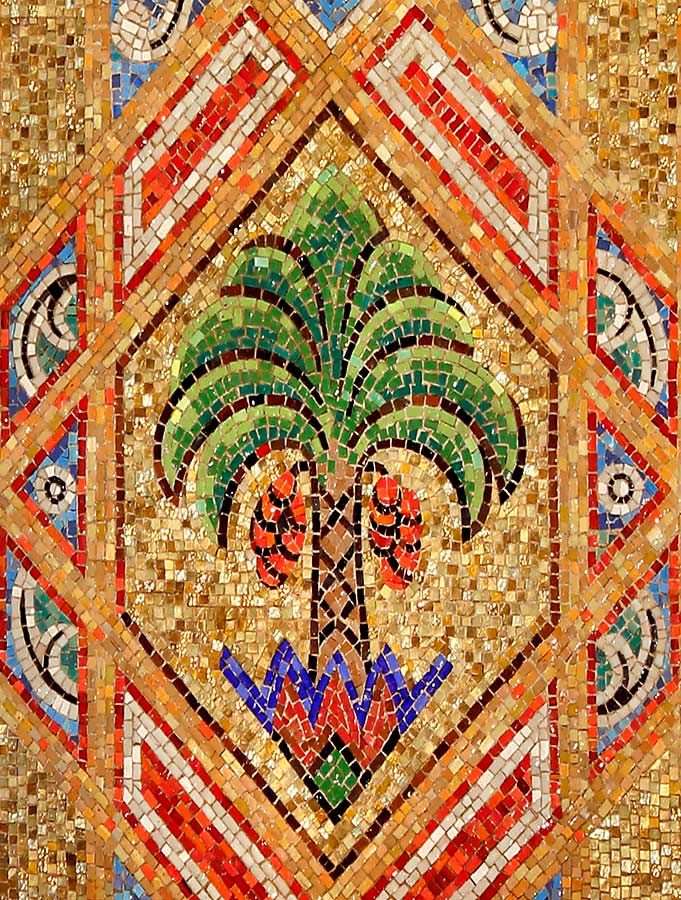
Tree of Life
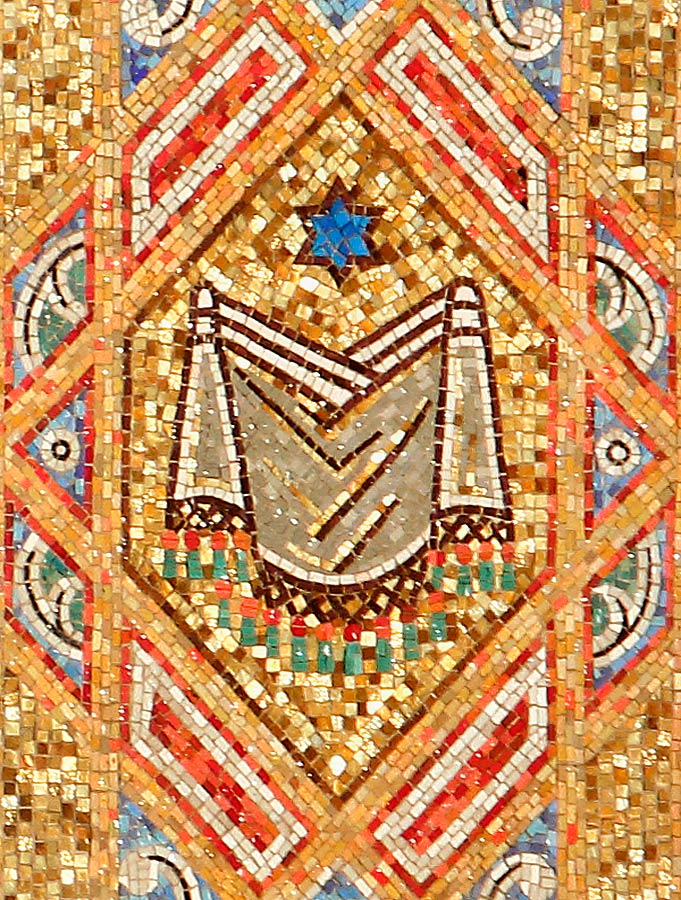
Prayer Shawl
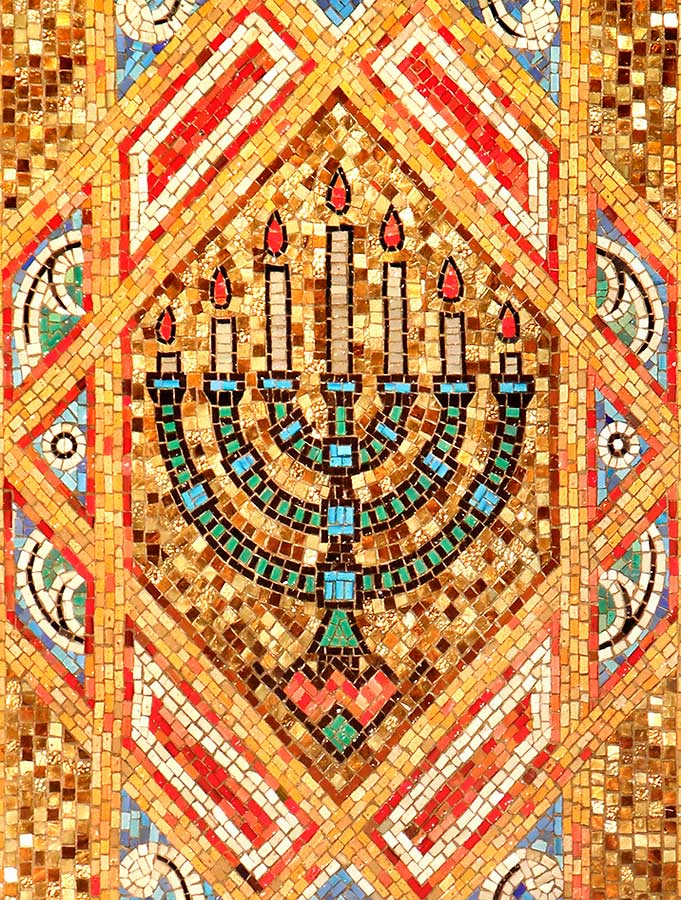
Seven-branched Menorah
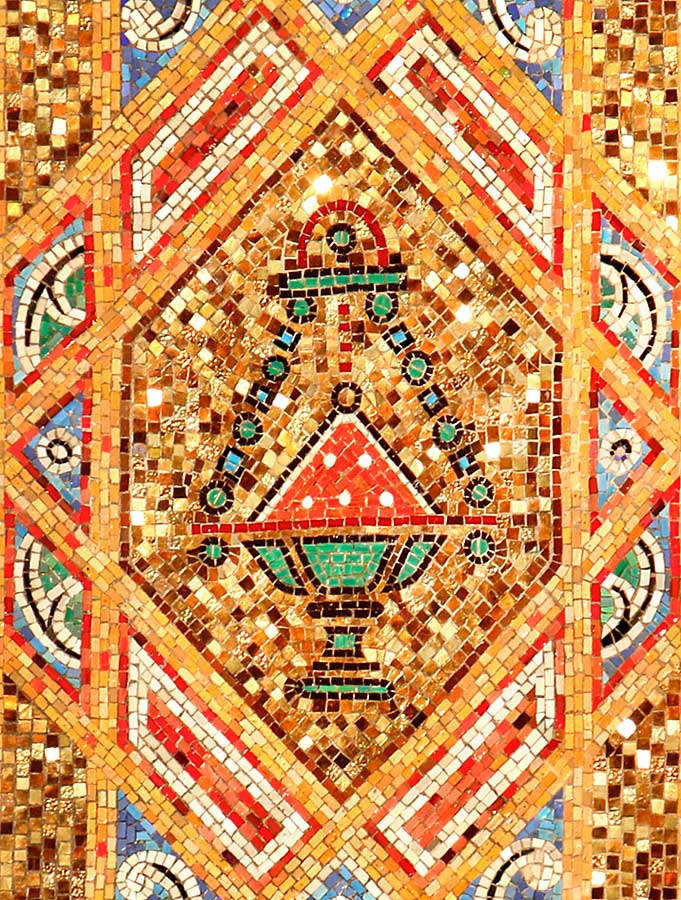
Eternal Light
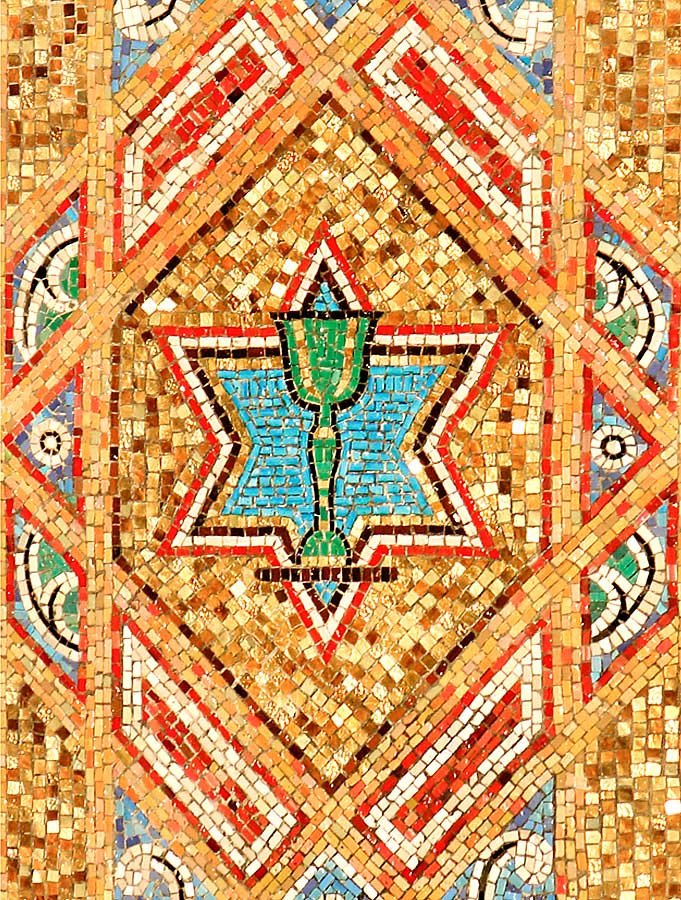
Star of David
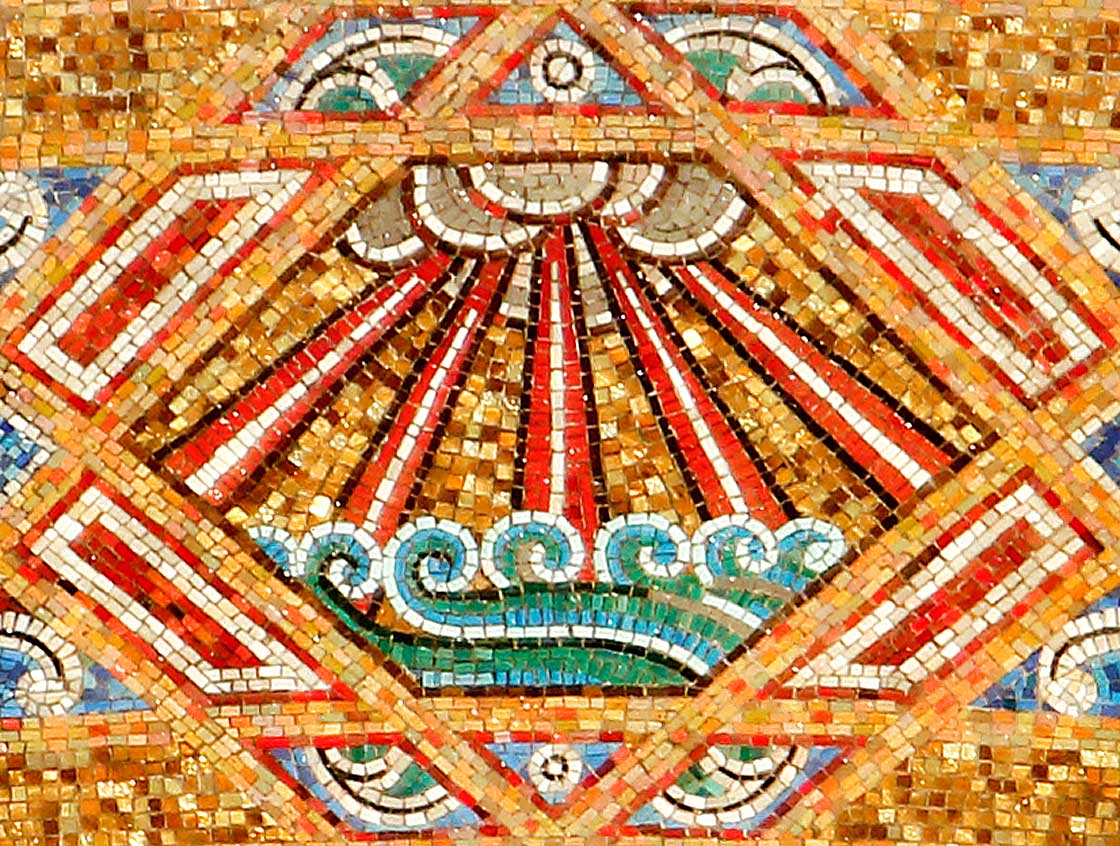
Day Two of Creation
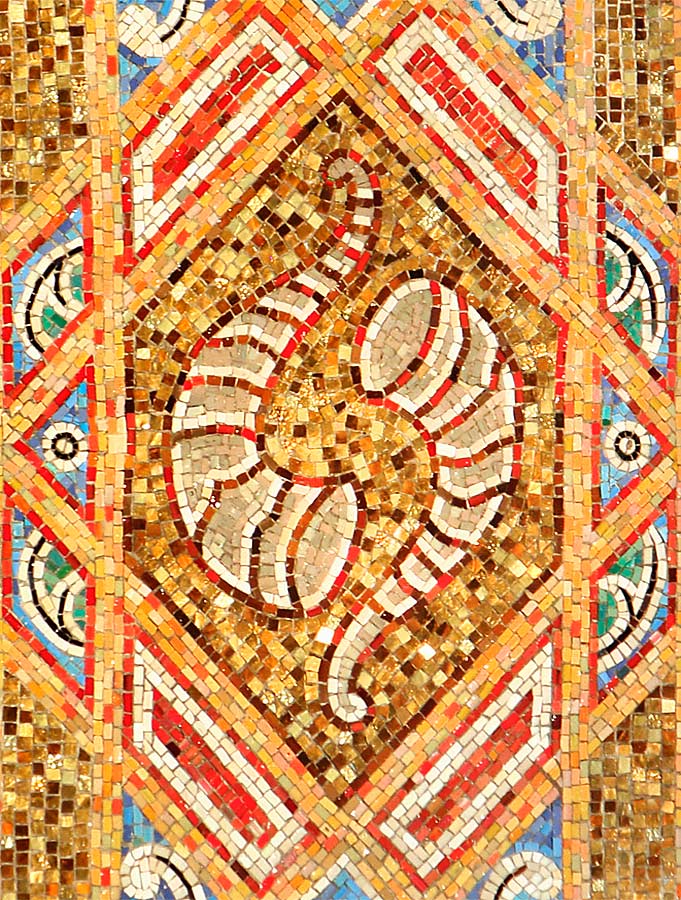
Shofars
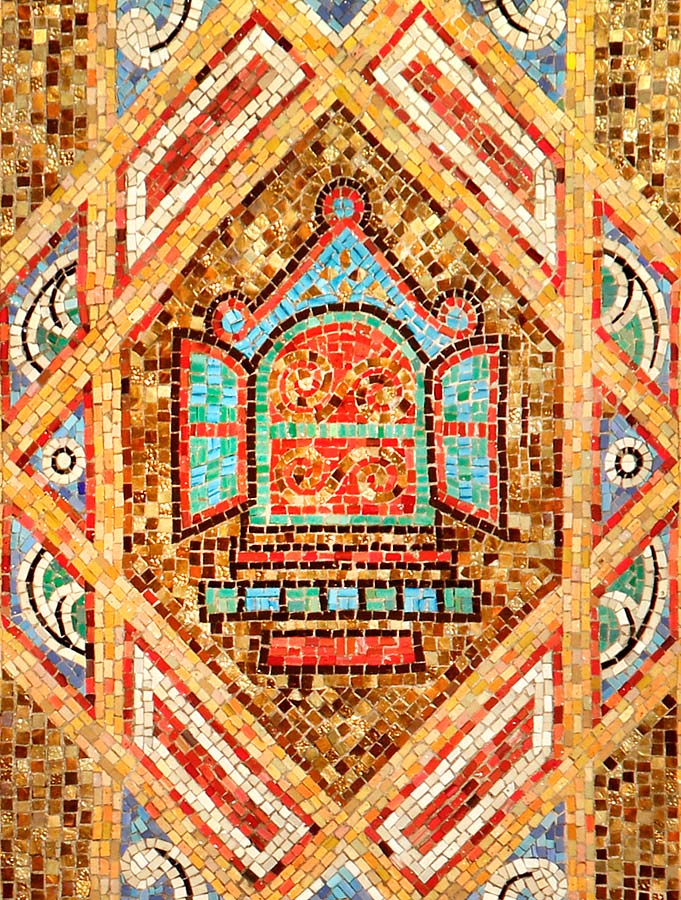
Open Torah Ark
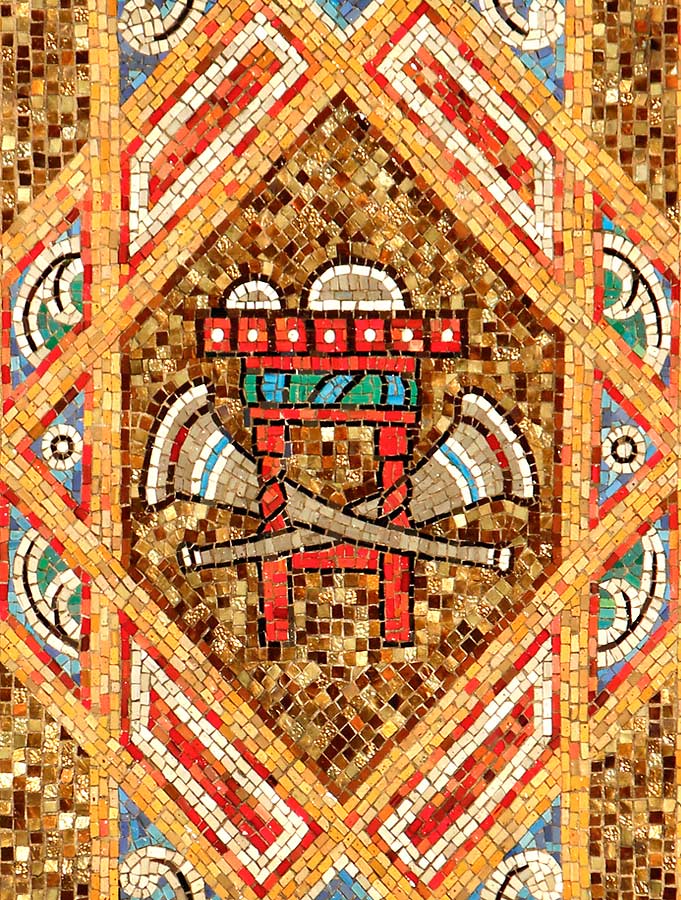
Table of Shewbread
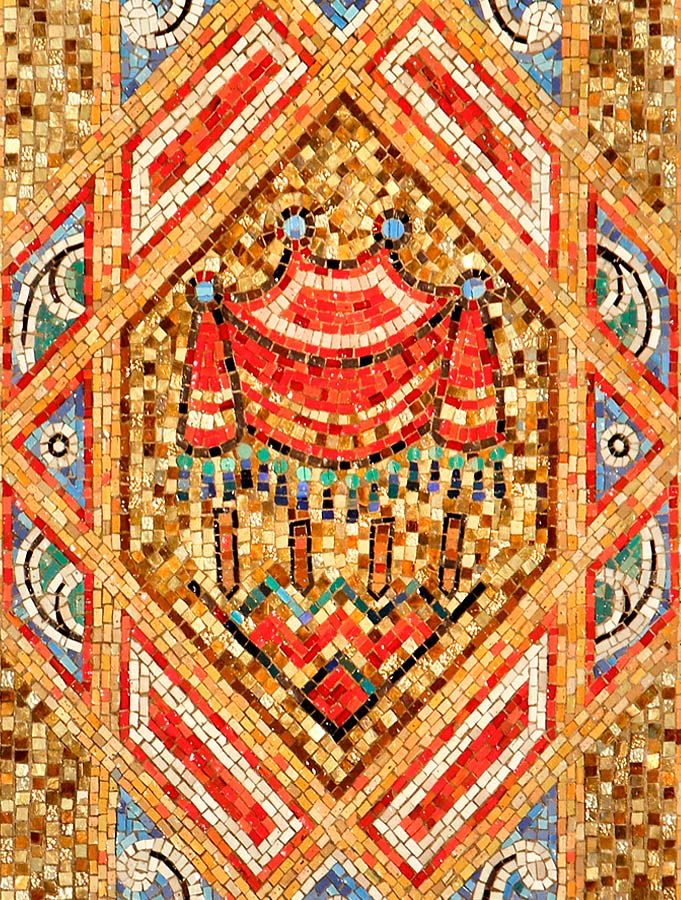
Wedding Canopy
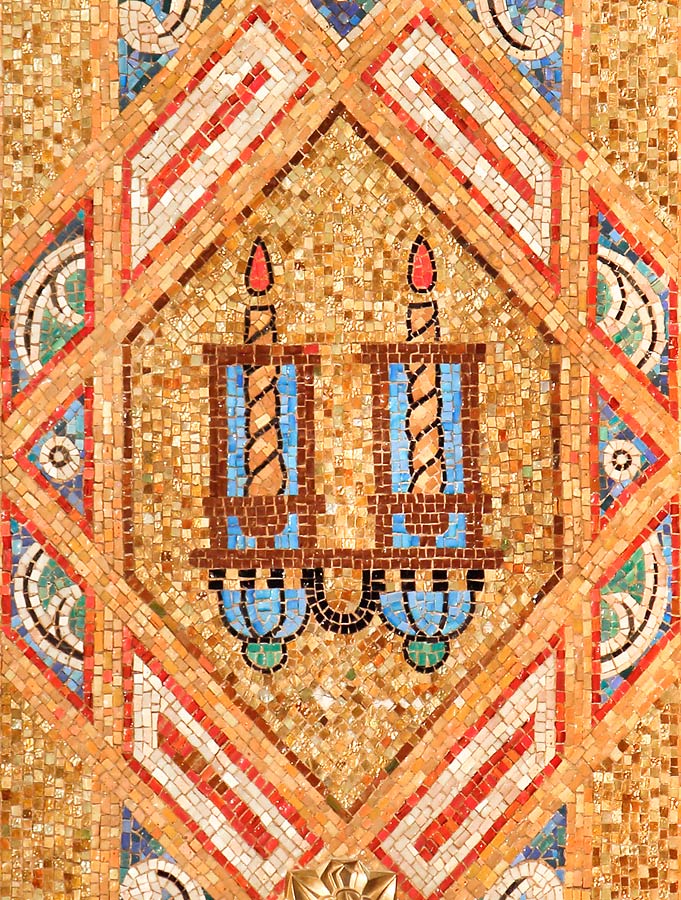
Two Sabbath Candles
Meière’s sophisticated Byzantine-style glass mosaic patterns in bright colors and vibrant shades of gold leaf are so intricate that it is difficult to find a repeat among the vertical bands:
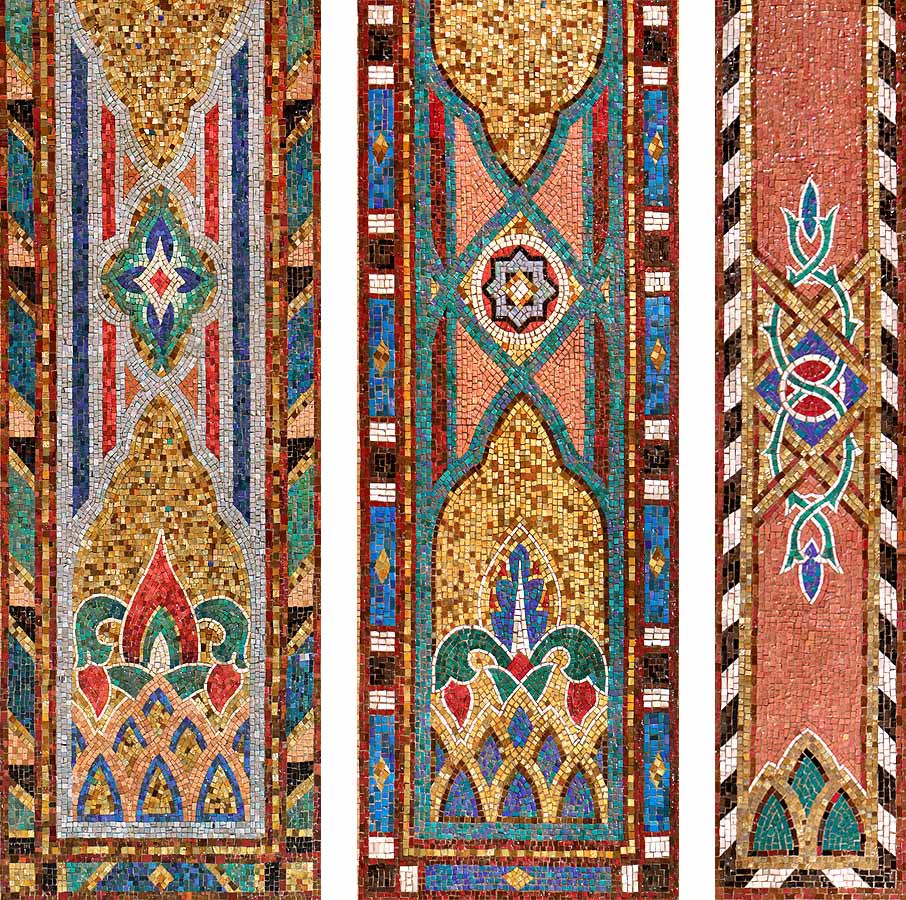
Details of Art Deco-style vertical bands in Byzantine-style glass mosaic
Among the designs that she incorporated into her Byzantine-inspired Art Deco style is a black-and-white chevron border inspired by Sioux quillwork and beadwork that she had become familiar with while working on designs for the Nebraska State Capitol and that she had also used in her border decoration of Rockefeller Chapel at the University of Chicago Chapel.
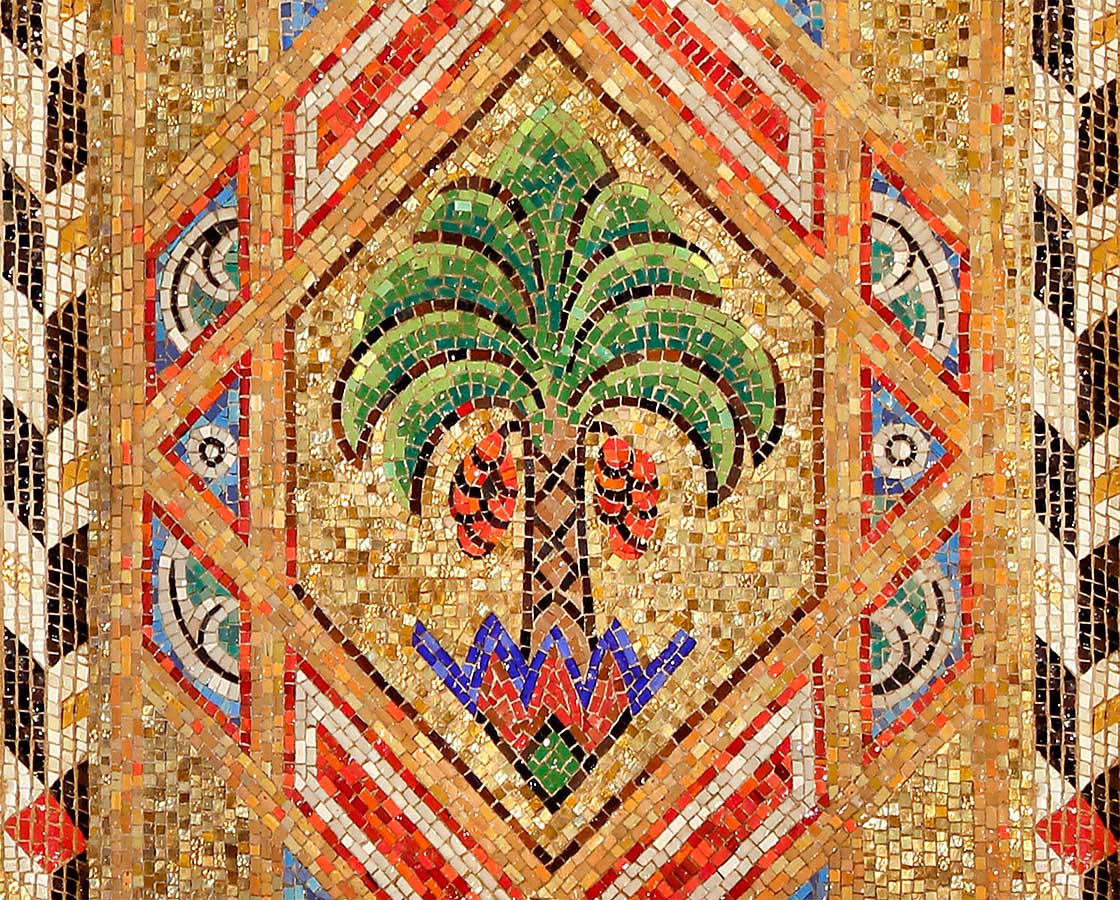
Detail of Tree of Life with black-and-white chevron border
Meière’s glass mosaic designs for Temple Emanu-El were fabricated in Berlin by the German firm Pühl & Wagner and installed by their American affiliate Ravenna Mosaics at the same time that the factory was fabricating Meière’s designs for St. Bartholomew’s Church.
In 1928 Meière and Francis Mayers visited the Pühl & Wagner factory in Berlin to see how the mosaicists would interpret her painted cartoons in the medium of Byzantine-style glass mosaic. Impressed by the samples she saw, Meière spent several days at the factory learning all that she could about the mosaic-making process, in order to provide the mosaicists with the best possible cartoons. Although Meière posed holding a mosaicist’s hammer during her visit, she herself was never a mosaicist. She remained a muralist who designed for a variety of mediums including mosaic.
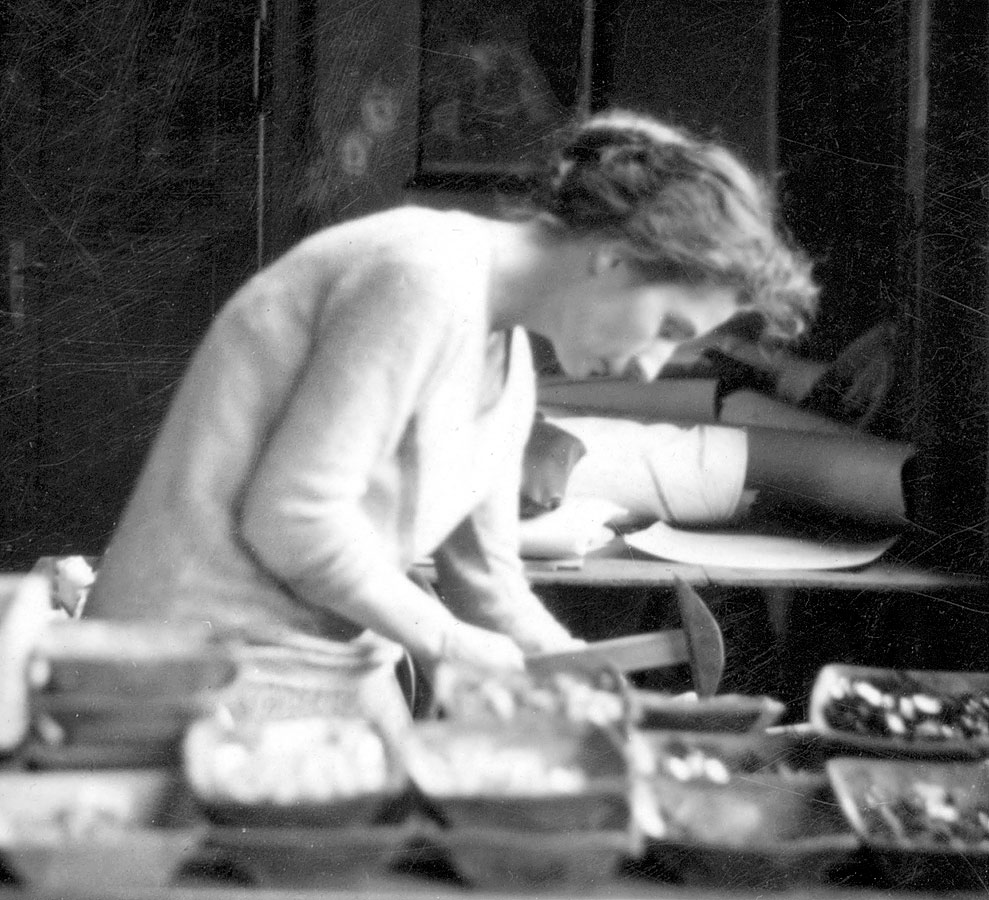
While at the Pühl & Wagner factory in 1927, Meière posed holding a mosaicist's double-edged hammer, but she herself was never a mosaicist. She was a muralist who designed for a variety of mediums, including mosaic.
Meière’s cartoons in gouache on brown paper for her designs at Temple Emanu-El remain in Berlin, where they form part of the Pühl & Wagner, Heinersdorff Company Archive at the Berlinische Galerie Museum für Moderne Kunst:
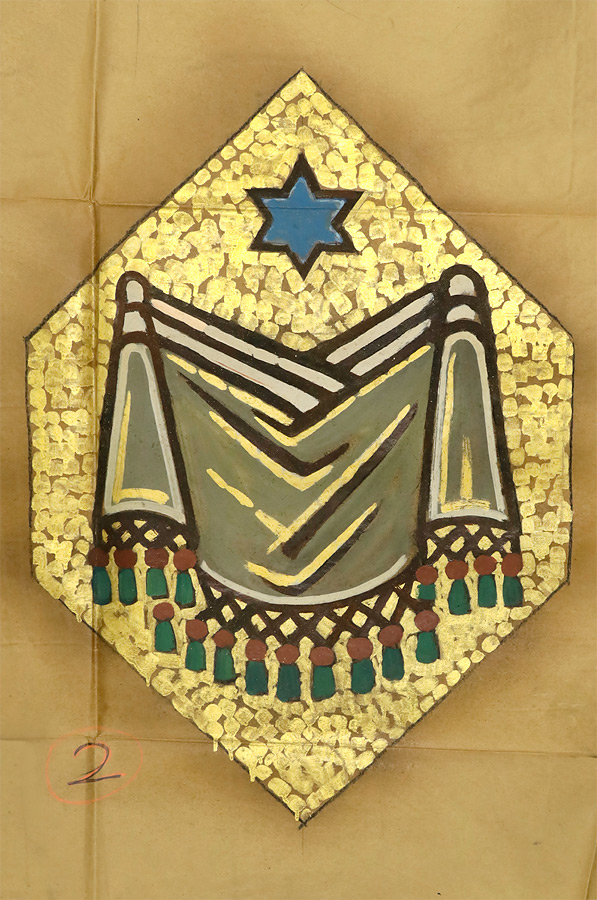
Prayer Shawl
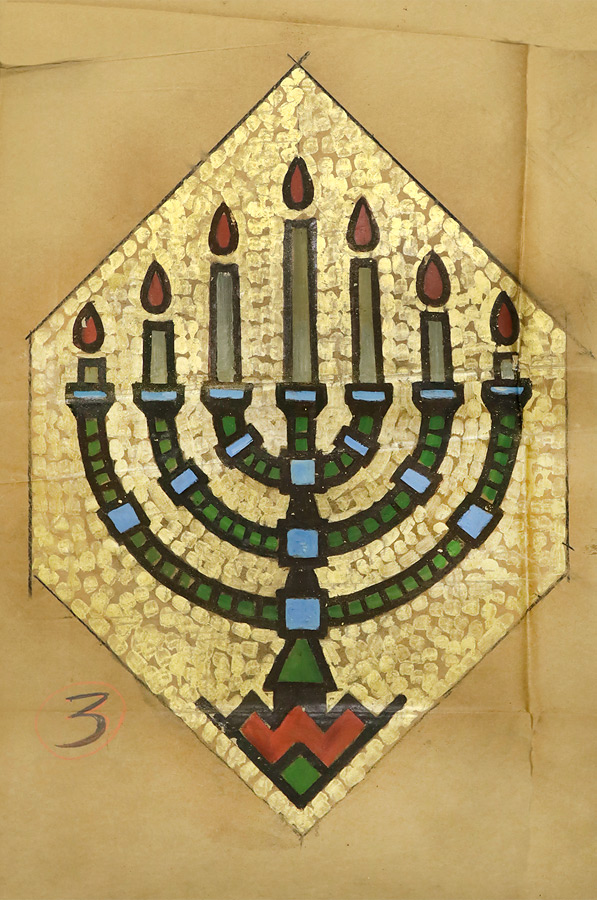
Seven-branched Menorah
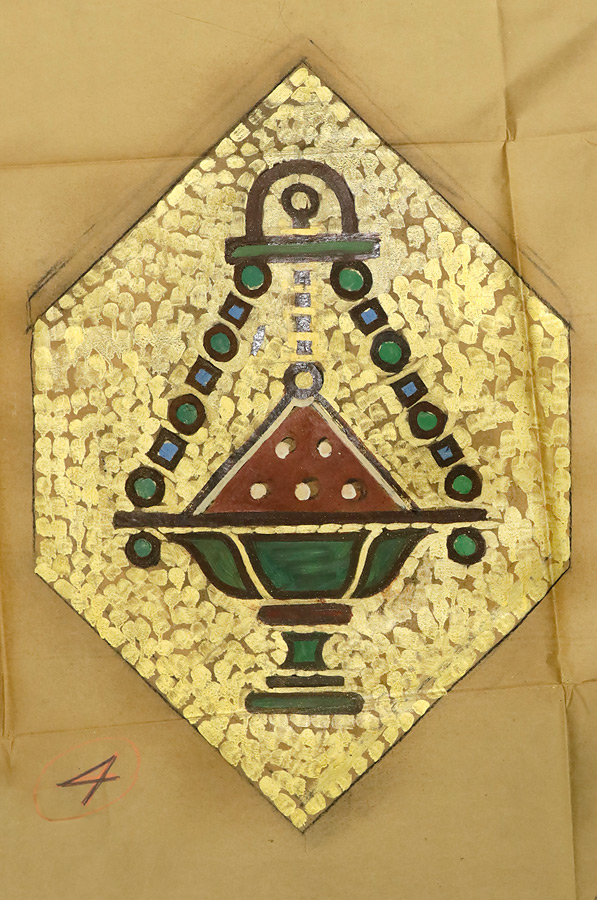
Eternal Light
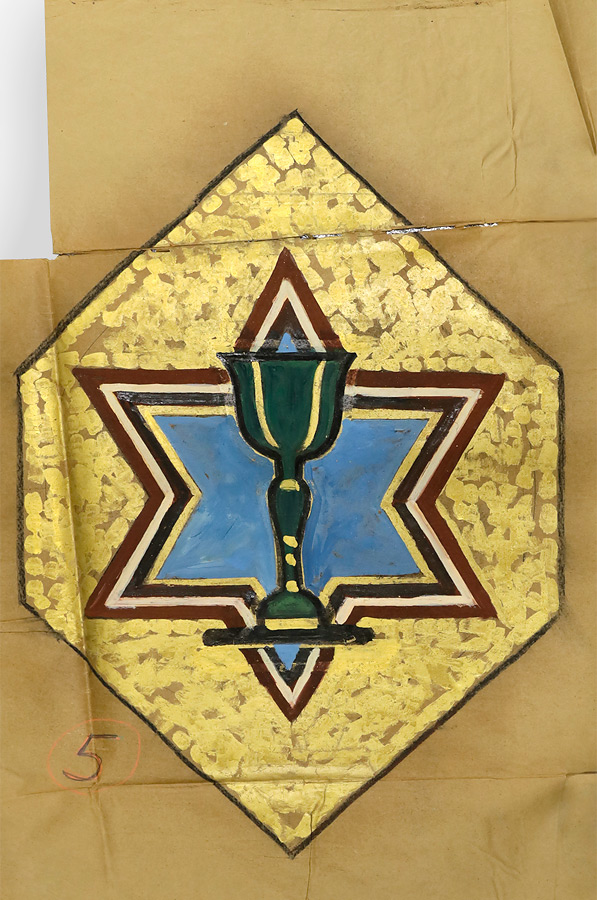
Star of David
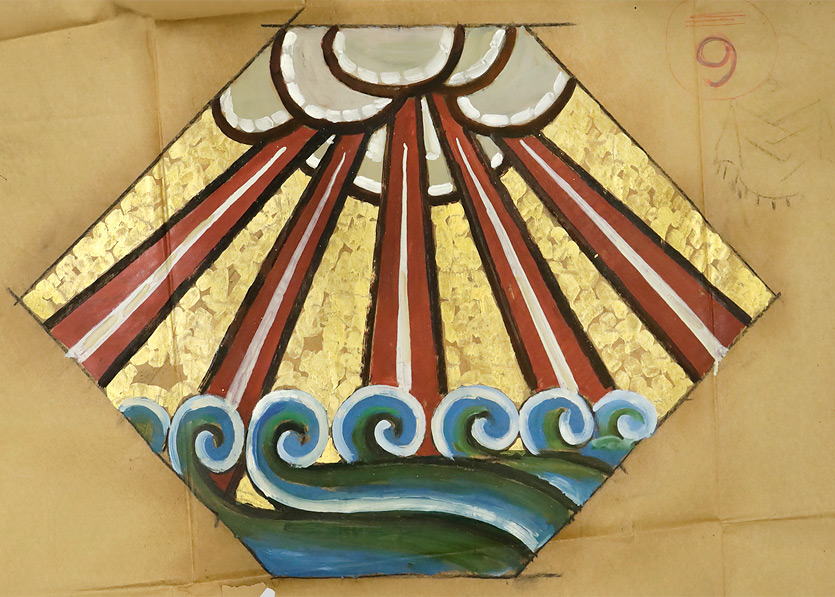
Day Two of Creation
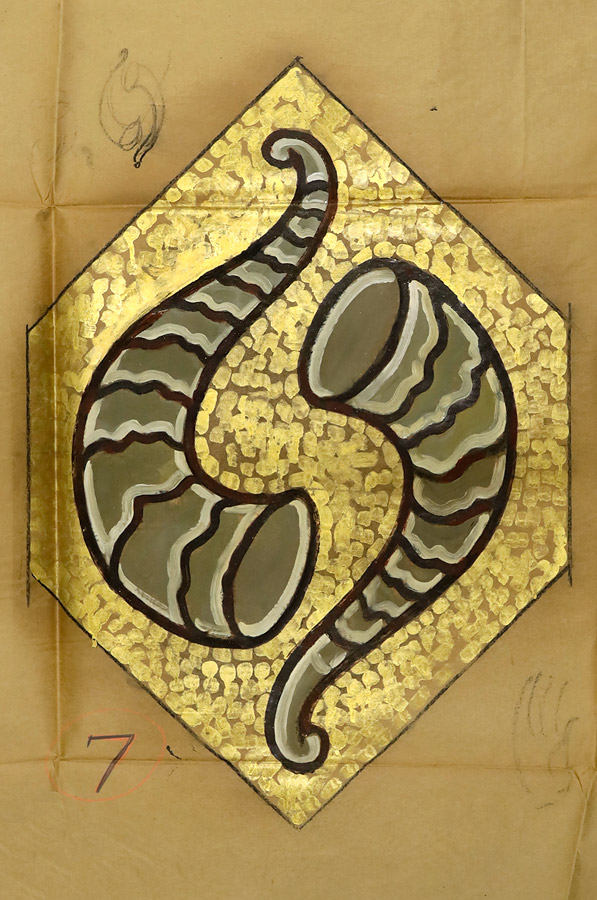
Shofars
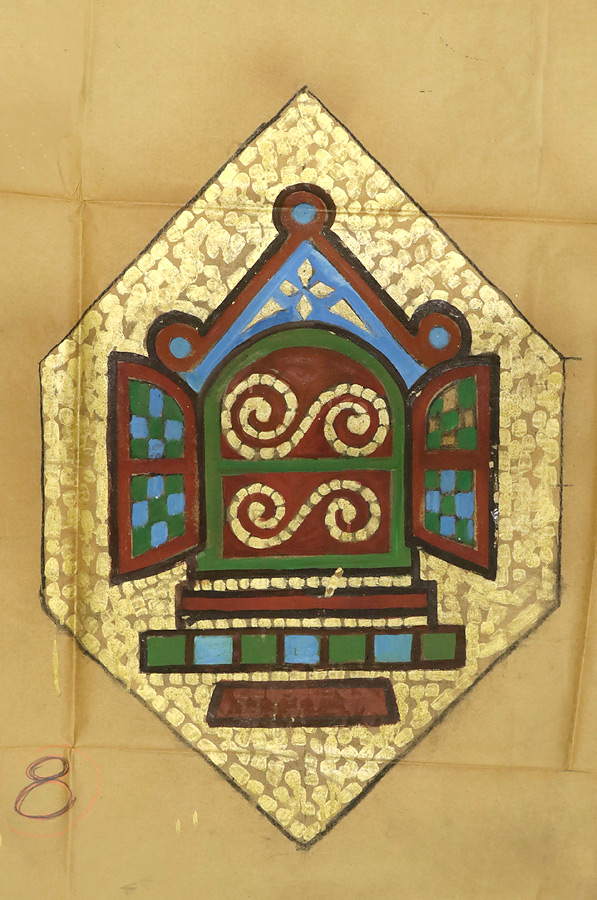
Open Torah Ark
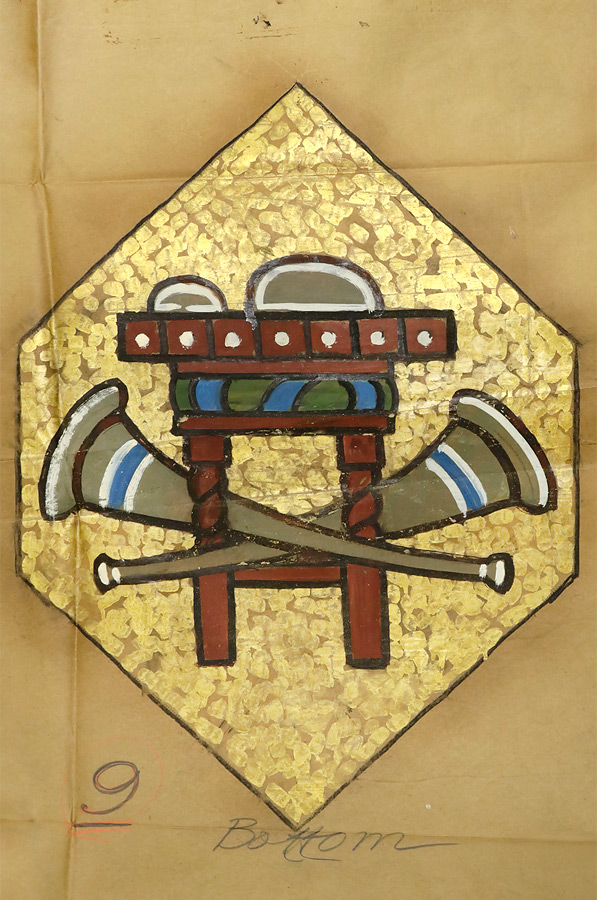
Table of Shewbread
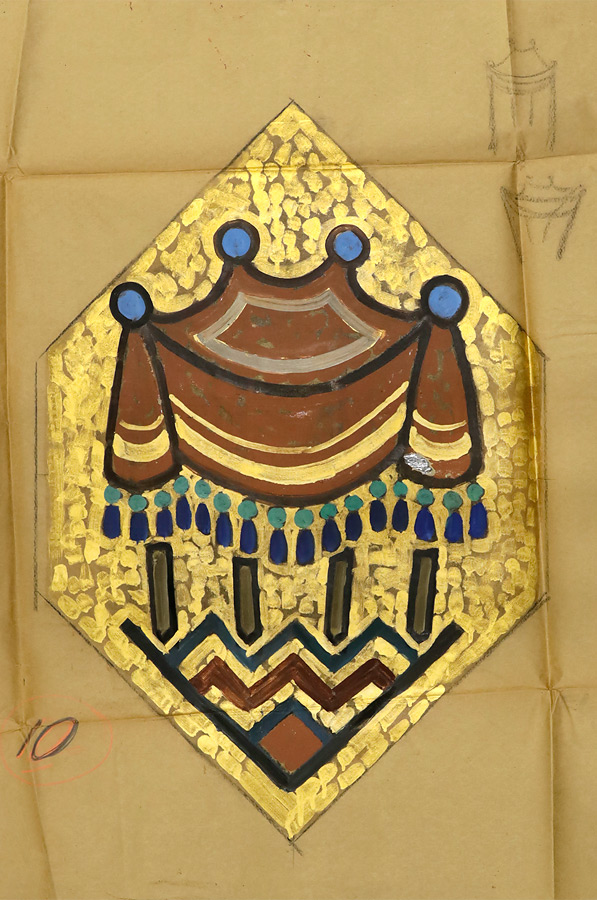
Wedding Canopy

Two Sabbath Candles
With regard to the mosaicists’ interpretation of her cartoons, Meière wrote:
It is always a pleasant shock to me to find how far superior the finished craft work is to the cartoons. This is true for every medium for which I have designed and makes me realize how much lies in the beauty of the material itself, the value of its texture, the character of its surface and color.2https://www.hildrethmeiere.org/files/images/hildreth-meiere-temple-emanu-el-details-of-design.jpg
The fine quality of Ravenna Mosaic’s installation of Meière’s designs at Temple Emanu-El was attested to when the mosaics were cleaned in 2005, and only six of the millions of individual tesserae composing the eight-story-high design on the arch became loose.
Meière’s Byzantine-style glass mosaic designs at Temple Emanu-El differ from those in the narthex at St. Bartholomew’s that she designed simultaneously, reflecting the variety Meière was able to achieve within her Art Deco style.
For a full discussion, see Catherine Coleman Brawer and Kathleen Murphy Skolnik, The Art Deco Murals of HIldreth Meière (New York: Andrea Monfried Editions, 2016) 84-89.
Hildreth Meière, “The Question of Decoration,” Architectural Forum 57: 1 (July 1932): 8.